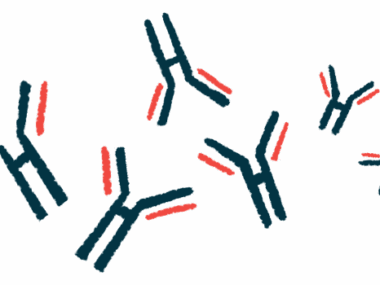Triple Therapy Effective in AAV Relapse After Kidney Transplant
Case illustrates need for closely monitoring belatacept after kidney injury
Written by |

A combination of rituximab, prednisone, and tacrolimus effectively treated a recurrence of anti-neutrophil cytoplasmic autoantibody (ANCA)-associated vasculitis (AAV) after a kidney transplant, a case study reported.
The case highlights the importance of closely monitoring AAV patients on immunosuppressive therapy with belatacept, particularly when a kidney injury follows a kidney transplant.
The report “Early post-transplant recurrence of ANCA vasculitis while on belatacept maintenance immunosuppression,” was published in Journal of Nephrology.
ANCA-associated vasculitis is a group of autoimmune conditions marked by inflammation and damage to small blood vessels. This inflammation is usually caused by ANCAs, self-reactive antibodies that bind to certain cells of the immune system (namely neutrophils) and overactivate them.
The kidneys are often the main site of AAV-caused damage, which can result in kidney failure that may require a transplant. An AAV relapse after a kidney transplant is rare, especially in the first few weeks after one.
Disease recurrence after kidney transplant
A team of researchers at the Mayo Clinic in Rochester, Minnesota reported an uncommon case of a 56-year-old woman with AAV whose disease recurred within two weeks after a kidney transplant while on immunosuppressive treatment.
The woman was diagnosed with AAV at age 15 after developing two granulomas, or masses of immune cells linked to inflammation, in her eye. The first granuloma was removed by surgery and the second was treated with cyclophosphamide and high-dose corticosteroids, both immunosuppressive agents.
She underwent a maintenance treatment with another immunosuppressant called azathioprine. However, at age 50, she developed advanced kidney disease due to AAV which led her to undergo hemodialysis.
Blood tests showed antibodies targeting myeloperoxidase (MPO) and proteinase 3 (PR3), the most common ANCAs in people with AAV. She had no symptoms and clinicians believed the disease was in remission and recommended keeping the azathioprine treatment.
After six years in hemodialysis, the woman was submitted to a kidney transplant. After it, she was treated with thymoglobulin – to avoid rejection – and methylprednisone, a corticosteroid. She received maintenance treatment with several immunosuppressive agents, including belatacept, mycophenolate mofetil, and prednisone.
Two weeks after the transplant, she developed delayed graft function, which is characterized by kidney injury and means the transplanted kidney was not working properly. This was confirmed by kidney biopsy.
Additional blood tests showed anti-MPO and anti-PR3 antibodies, but no anti-glomerular basement membrane antibodies (associated with kidney damage) were detected. Levels of C-reactive protein, a widely used inflammatory biomarker, were elevated, at 21.6 mg/L.
Diagnosis of recurrent AAV
Given these results, the woman was diagnosed with early recurrent AAV.
She was given rituximab, prednisone, and intravenous immunoglobulin – a pool of several antibodies derived from the plasma of healthy blood donors. Belatacept was replaced by the immunossuppressive treatment tacrolimus (sold as Prograf, among others). It’s known to reduce recurrence rates by inhibiting T helper cells (a type of immune cell), decreasing ANCA antibody production.
Four days after treatment with rituximab and prednisone, the woman began producing urine and stopped dialysis a few days later. A reduction in levels of creatinine, a marker of kidney dysfunction, was observed. Levels of B-cells (another type of immune cell), MPO and PR3 antibodies also decreased with treatment.
Additional biopsy results on day 114 post-transplant showed a reduction in kidney damage and her kidney function continued to improve.
A year after the transplant, there were no signs of AAV in a biopsy, suggesting the woman was responding to treatment. Tacrolimus and prednisone were maintained.
“Though the exact mechanisms behind these pro-inflammatory phenomena remain unknown, several theories may explain the reactivation of AAV in our patient and formed the basis for conversion to tacrolimus, without subsequent AAV recurrence,” the researchers wrote, adding the “abrupt reactivation of AAV” may have been caused by the incomplete inhibition of T-helper cells by belatacept.
“Our case suggests that for systemic autoimmune disease, patients maintained on belatacept must be monitored closely for recurrence, particularly in the setting of delayed graft function,” the researchers wrote, noting they recognized that, while the woman responded well to rituximab and switching belatacept with tacrolimus, her case “suggests that the natural history of systemic autoimmune disease may differ from the experience with more traditional immunosuppression” approaches.






